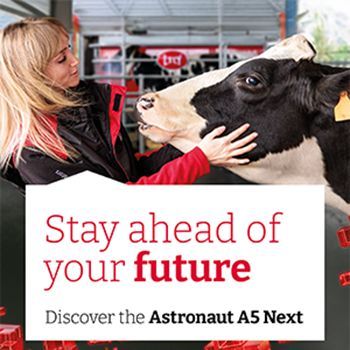The Rise and Legacy of “Got Milk?”: How a Simple Slogan Became a Cultural Phenomenon
Source: DairyNews.today
Few advertising slogans have etched themselves into American culture quite like “Got Milk?” Alongside memorable taglines such as “Just Do It” and “I’m Lovin’ It,” the phrase is instantly recognizable, conjuring images of milk mustaches and star-studded campaigns.

What began as a simple marketing pitch in the 1990s transformed into one of the most iconic advertising efforts in history, though its impact on milk consumption is more nuanced.
A Campaign Born from Necessity
In the early 1990s, the California Milk Processor Board faced a stark reality: milk consumption was in steady decline. While milk had been a dietary staple for much of the 20th century, the rise of soft drinks and shifting health trends had eroded its dominance. To reverse this trend, the board enlisted advertising agency Goodby, Silverstein & Partners, leading to the birth of “Got Milk?”
The campaign’s origins were rooted in a straightforward insight. During focus groups, participants were asked to abstain from milk for a week. The response was clear—milk wasn’t just a beverage; it was an essential part of daily life, from cereal to coffee. The discomfort of running out of milk became the campaign’s central theme: milk wasn’t just nice to have—it was indispensable.
A Cultural Touchstone
The campaign launched in 1993 with a memorable television ad directed by a then-unknown Michael Bay. It depicted a man choking on a peanut butter sandwich, unable to answer a radio trivia question due to a lack of milk. The humor and relatability struck a chord with audiences, and “Got Milk?” became an instant hit.
Soon after, the campaign expanded to include the iconic milk mustache ads, created by the Milk Processor Education Program. Featuring celebrities from Naomi Campbell and Jennifer Aniston to Beyoncé and even Kermit the Frog, the ads became a badge of honor for stars and a pop culture staple. Shot by renowned photographer Annie Leibovitz, the campaign blended glamour and simplicity, cementing its place in advertising history.
From Boom to Bust
Despite its cultural success, “Got Milk?” faced challenges in achieving its ultimate goal: reversing the decline in milk consumption. Initial years saw a modest bump in sales, but the long-term trend remained downward. By the 2010s, plant-based alternatives and growing environmental concerns further eroded milk’s market share.
A 2019 study revealed that most Americans consume less than half a cup of milk daily, reflecting a broader shift in dietary habits. Though milk’s popularity waned, the campaign’s imagery remains iconic, representing an era when advertising could capture the national imagination.
An Enduring Legacy
Though it didn’t restore milk to its former prominence, the “Got Milk?” campaign left an indelible mark on marketing. Its success lay in its simplicity, relatability, and ability to evolve into a cultural symbol. While the milk industry grapples with new challenges, the slogan continues to evoke nostalgia and recognition—a testament to the power of a well-crafted ad campaign.
As milk’s role in the American diet changes, “Got Milk?” serves as a reminder of the influence advertising can wield, even if it doesn’t always deliver the desired results.
A Campaign Born from Necessity
In the early 1990s, the California Milk Processor Board faced a stark reality: milk consumption was in steady decline. While milk had been a dietary staple for much of the 20th century, the rise of soft drinks and shifting health trends had eroded its dominance. To reverse this trend, the board enlisted advertising agency Goodby, Silverstein & Partners, leading to the birth of “Got Milk?”
The campaign’s origins were rooted in a straightforward insight. During focus groups, participants were asked to abstain from milk for a week. The response was clear—milk wasn’t just a beverage; it was an essential part of daily life, from cereal to coffee. The discomfort of running out of milk became the campaign’s central theme: milk wasn’t just nice to have—it was indispensable.
A Cultural Touchstone
The campaign launched in 1993 with a memorable television ad directed by a then-unknown Michael Bay. It depicted a man choking on a peanut butter sandwich, unable to answer a radio trivia question due to a lack of milk. The humor and relatability struck a chord with audiences, and “Got Milk?” became an instant hit.
Soon after, the campaign expanded to include the iconic milk mustache ads, created by the Milk Processor Education Program. Featuring celebrities from Naomi Campbell and Jennifer Aniston to Beyoncé and even Kermit the Frog, the ads became a badge of honor for stars and a pop culture staple. Shot by renowned photographer Annie Leibovitz, the campaign blended glamour and simplicity, cementing its place in advertising history.
From Boom to Bust
Despite its cultural success, “Got Milk?” faced challenges in achieving its ultimate goal: reversing the decline in milk consumption. Initial years saw a modest bump in sales, but the long-term trend remained downward. By the 2010s, plant-based alternatives and growing environmental concerns further eroded milk’s market share.
A 2019 study revealed that most Americans consume less than half a cup of milk daily, reflecting a broader shift in dietary habits. Though milk’s popularity waned, the campaign’s imagery remains iconic, representing an era when advertising could capture the national imagination.
An Enduring Legacy
Though it didn’t restore milk to its former prominence, the “Got Milk?” campaign left an indelible mark on marketing. Its success lay in its simplicity, relatability, and ability to evolve into a cultural symbol. While the milk industry grapples with new challenges, the slogan continues to evoke nostalgia and recognition—a testament to the power of a well-crafted ad campaign.
As milk’s role in the American diet changes, “Got Milk?” serves as a reminder of the influence advertising can wield, even if it doesn’t always deliver the desired results.











